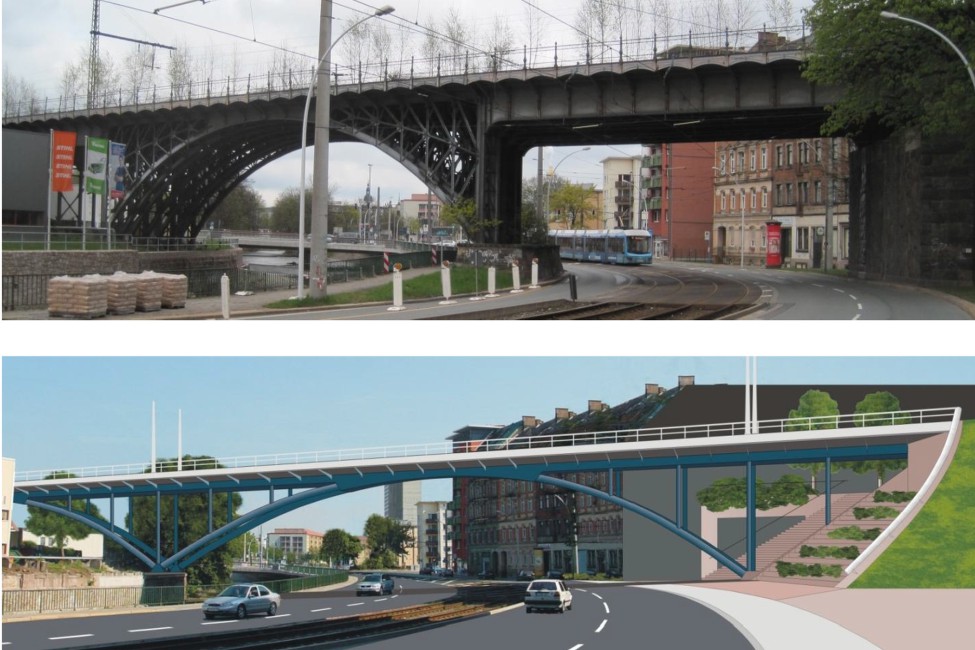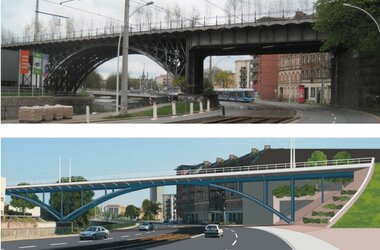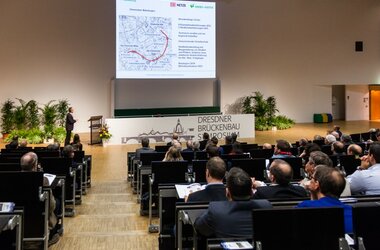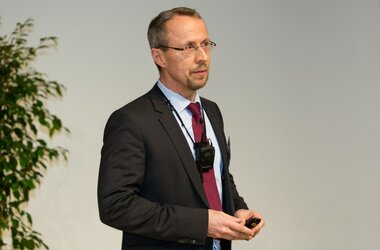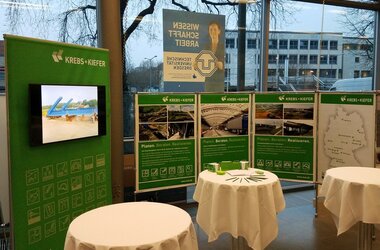Dresden Bridge Construction Symposium 2017
On 13 and 14 March 2017, the 27th traditional bridge building symposium took place at the Technical University of Dresden. With around 1,250 participants, the meeting of bridge builders and civil engineers was very well attended, as it is every year.
On 13 and 14 March 2017, the 27th traditional bridge building symposium took place at the Technical University of Dresden. With around 1,250 participants, the meeting of bridge builders and civil engineers was very well attended, as it is every year.
As in previous years, KREBS+KIEFER was again represented with its own stand. In his talk entitled "Chemnitztal Viaduct – new building versus preservation", Professor Richard Stroetmann, Managing Director of KREBS+KIEFER in Dresden, presented the rail project that had caused controversy with the general public. His contribution was presented in collaboration with Lutz Buchmann and his team from DB Netz AG in Dresden.
As part of the pan-German Federal traffic infrastructure plan of 1992, it was decided to extend the Karlsruhe - Stuttgart - Nuremberg - Leipzig / Dresden stretch. One component of this stretch is the so-called "Saxony-Franconia main line" between Hof, Leipzig und Dresden, that requires a thorough renovation and modernisation. The section between Chemnitz Central Station and Chemnitz-Kappel, around 2.8 km long, has yet to be completed.
The Chemnitztal Viaduct built between 1901 and 1909 is part of the "Chemnitz railway arc". With 12 openings, comprising two lunettes and ten interstices, it forms a multi-span bridge around 270 m long in total. Due to the inadequate load capacity and durability, as well as its poor condition, DB Netz AG and the city of Chemnitz put out to tender in 2003 a design competition for a replacement construction. The result of this competition was that KREBS+KIEFER, together with the architect Carlo Gross, was awarded the contract for the design of a slender steel composite bridge.
Following the design competition, the project was initially postponed for reasons relating to transport policy. It was not until 2013 that the detailed planning of the replacement construction started. A citizens' action group, that demanded the rehabilitation of the construction, was founded with the aim of retaining the existing Chemnitztal Viaduct. In order to be able to assess this request objectively, detailed studies of various options were carried out by KREBS+KIEFER. In addition to the "repair" and "new construction" options, three other hybrid options were investigated in which the existing structure was partially retained and combined with some new construction.
The new construction of the viaduct contained numerous technical and functional benefits, such as a 25% small bridge area, considerably lower steel tonnages and smaller areas to be painted, much lower construction and maintenance costs as well as a shorter construction period. The strengthening of the existing viaduct would retain a monument to the art of civil engineering that is closely associated with the history of the industrial development of the city of Chemnitz. The decision regarding whether to carry out a new construction or retain the Chemnitztal Viaduct will be taken by the Federal Railway Authority after weighing up the various facts and arguments.
